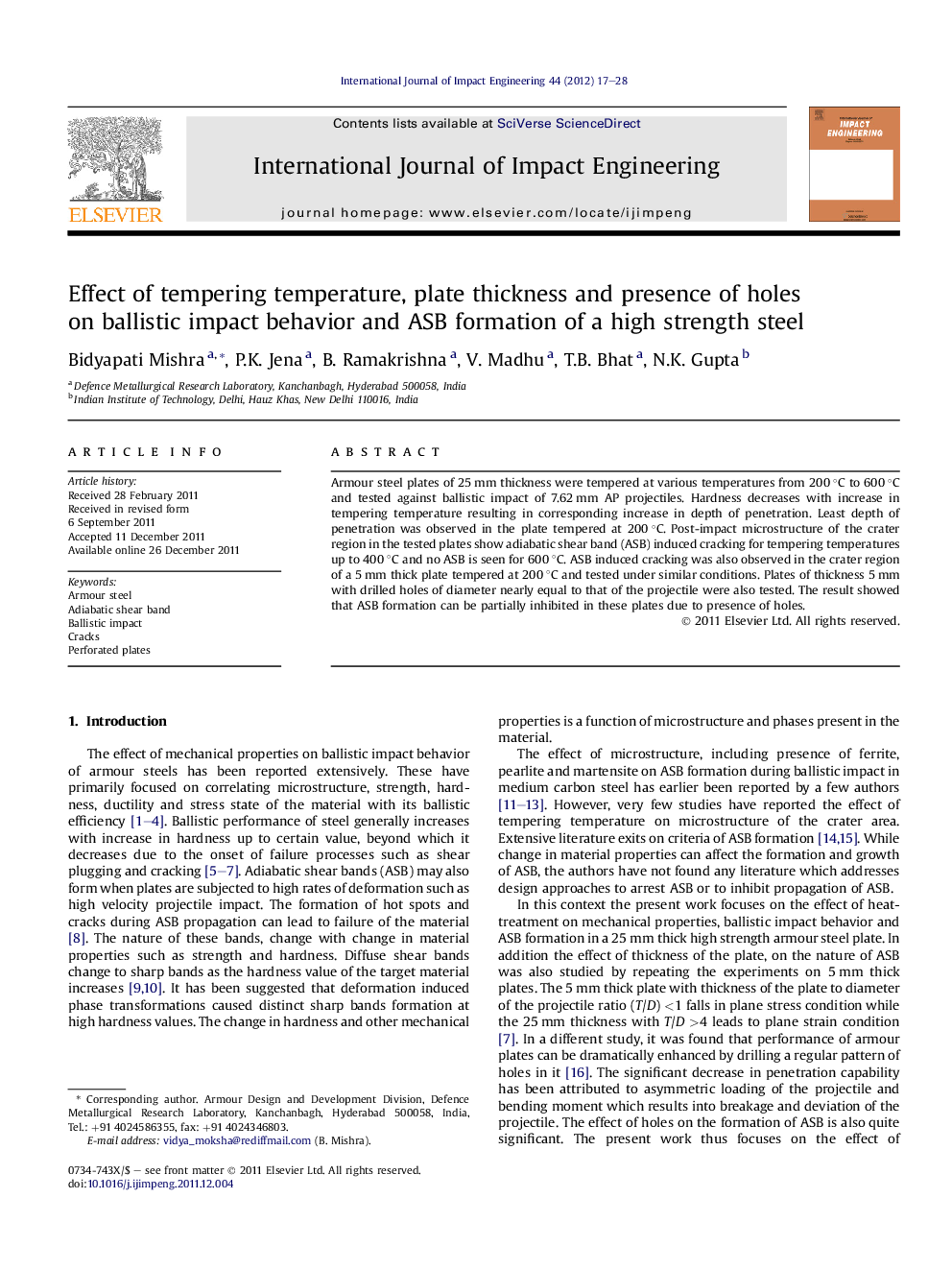| Article ID | Journal | Published Year | Pages | File Type |
|---|---|---|---|---|
| 783121 | International Journal of Impact Engineering | 2012 | 12 Pages |
Armour steel plates of 25 mm thickness were tempered at various temperatures from 200 °C to 600 °C and tested against ballistic impact of 7.62 mm AP projectiles. Hardness decreases with increase in tempering temperature resulting in corresponding increase in depth of penetration. Least depth of penetration was observed in the plate tempered at 200 °C. Post-impact microstructure of the crater region in the tested plates show adiabatic shear band (ASB) induced cracking for tempering temperatures up to 400 °C and no ASB is seen for 600 °C. ASB induced cracking was also observed in the crater region of a 5 mm thick plate tempered at 200 °C and tested under similar conditions. Plates of thickness 5 mm with drilled holes of diameter nearly equal to that of the projectile were also tested. The result showed that ASB formation can be partially inhibited in these plates due to presence of holes.
► Effect of tempering temperature on ASB formation has been studied. ► ASB induced cracking disappears at 500 °C. ► Effects of presence of holes on ASB formation have been studied. ► The presence of holes inhibits ASB formation.
